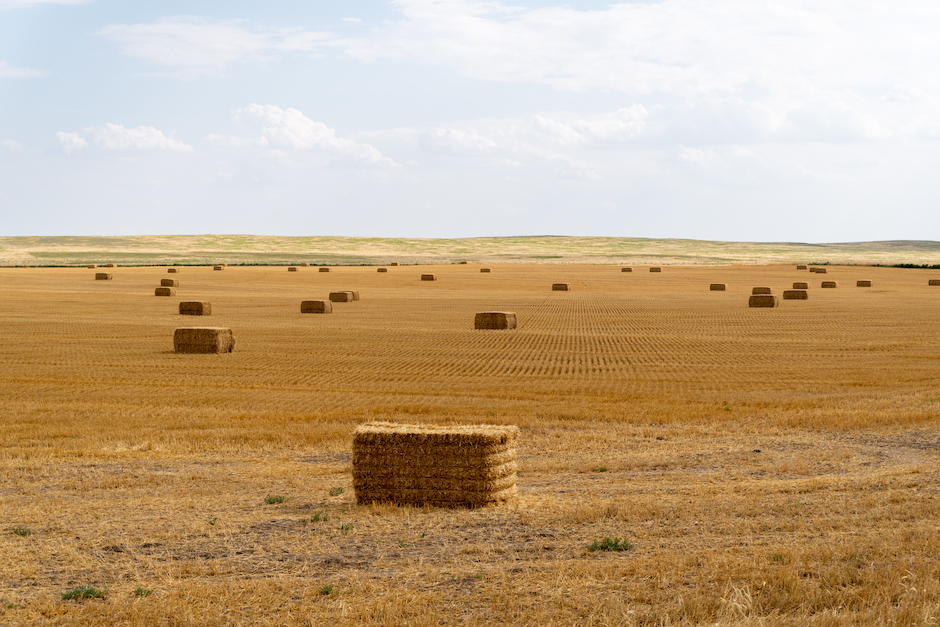
In the American prairie states hay is hard to miss. Golden pixels in the landscape in many shapes and sizes.



I realized that I had many unanswered questions about hay.
What were the crops?
How is it grown and packaged?
How big are the bundles- why?
Why are some bundles round and some rectangular?
How much does it cost?
I decided to find out as you never know when I will need to whip out these facts at a dinner party or if a student develops a project around horses or cows and I need to know more or ask, “Have you considered the hay?” So, I asked a farmer.


Alfalfa and clover are the main plants used for hay. After the green crop has grown it is cut by people on horse drawn carriages or tractors, dried in the sun, and baled. Then it is stacked for more drying. Typically, on long road trips we can see all stages of this process along the way with the various pieces of equipment in use.
I was told to be sure not to confuse hay with straw. Hay is cut and baled when it has the most nutritional value as animal fodder to feed grazing animals. Straw, used as bedding is cut after of the plants have been allowed to mature and the seed heads and plants have been harvested.
Hay comes in various shapes, sizes, weights and grades. Some more green or more brown. Some are more moist or dry or rectangular or round. Some are more nutritious. Rectangles are easier to store and typically people will purchase hay based on nutritional needs or what they can handle with their own hands and equipment.
Hay is more expensive than I would have thought. At the time of this writing bulk quantities run between $100 and $300 a ton in rural areas and are much costly closer to the suburbs or urban areas. Sales occur when hay has been sitting for a long time. Hay is hard to find in winter long after harvesting season and when it is the most needed the prices go up. There you have it. Just about everything a road tripper might want to know about the hay in America's pixelated landscape.
